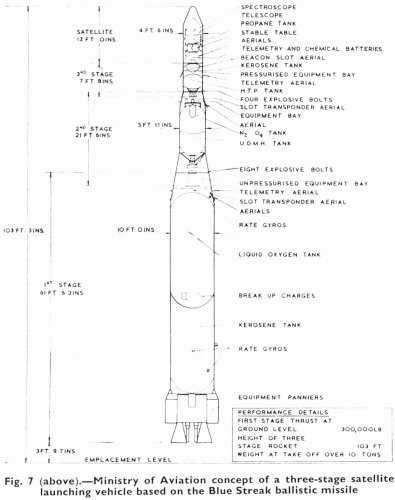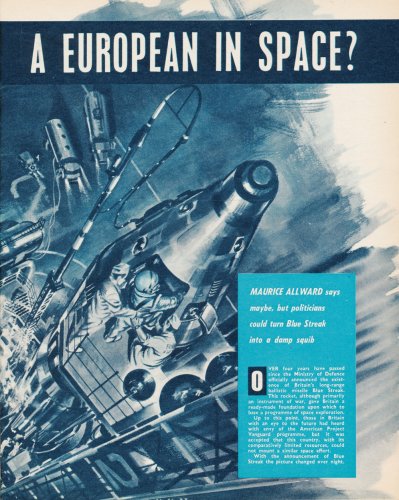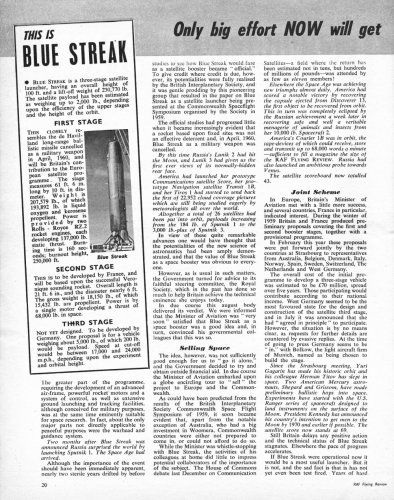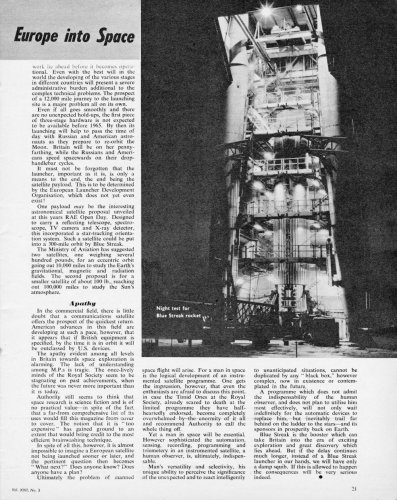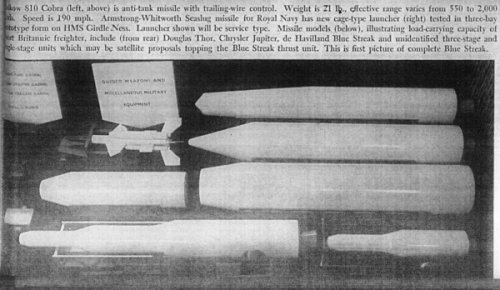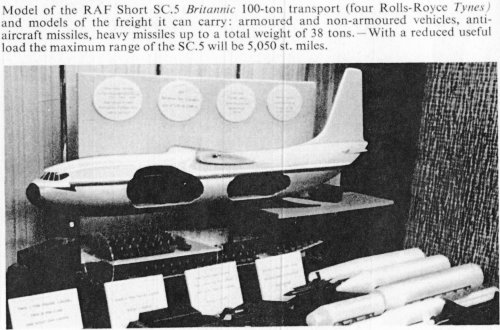Taken from “THE BLUE STREAK WEAPON”1
By Roy Dommett2
"UK studies for a three-man crew in orbit were done by several firms,
for example Armstrong-Whitworth, 91"
They needed the 4 or 5 RZ2 large Blue Streak or the Big English Electric Alternative to launch such a vehicle but the latter dropped out of the frame circa 1956
The Woomera launch pads and gantries were sized to these vehicles.
91 "Armstrong-Whitworth: a UK aerospace firm that merged with Gloster in 1961
within the Hawker Siddeley Group and then, in 1963, all became Hawker
Siddeley Aviation."
Pressure to merge firms started in 1957 so the studies were probably prior to that.
"English Electric was eased out. They had major aircraft projects in
hand. English Electric had the first shock tube in the UK that could
measure aerodynamic heating. The company was initially tasked with the
promising, but initially alternative, ablative heat shield re-entry head
design, but soon faded out of the scene, although this was eventually the
preferred design solution."
I first read about the EE ICBM circa 1956 and this is still a puzzle why this passed the censor.
"It had stretch potential, the motors could have
developed a higher maximum thrust, as well as be throttleable. It also
could have switched later on to UK storable propellants."
Ian Smith told me that rolls Royce were working on such an engine before the cancellation
"The Cold War engagements between Western bloc spy-planes and
the growing Soviet defences was a constant stimulus to aircraft
developments on both sides. Between 1946 and 1956 up to 50 Western
bloc aircraft were lost on surveillance missions."
Reason to build Space platforms with men to observe the Soviet Hinterland
"None of the early RAE or de Havilland panel minutes
have been traced in private or heritage collections, nor have the semiannual
reports complied by G. Pardoe for de Havillands with their many
photographs, of which copies were sent to the US Mutual Weapons
Office in Paris."
Weeded?
The evidence exists but is limited
The fact that the official sources are so well weeded indicates how important the work was.
Hansard has reports of UK satellites work circa 1960.
CNH said:
There is no mention of any enlarged military Blue Styreak in any official papers. Indeed, it would be difficult to think of any military use of such a vehicle. There was never any intention of developing a military BS SLV - indeed, when 'Black Prince' was promoted after the military cancellation, Watkinson did promise some money from the defence budget, but against the advice of his civil service.
The only four engined Rolls Royce design using the RZ2 was produced by Cleaver as a possibility for Europa III, and for fairly obvious political reasons, the French design was chosen instead.
As to recce sats - the DRPC were interested in the possibility, and thus King Hele was tasked to investigate the problems, which he did. It was never taken much further by the powers that be, presumably because the need for reconnaissance had diminished.

